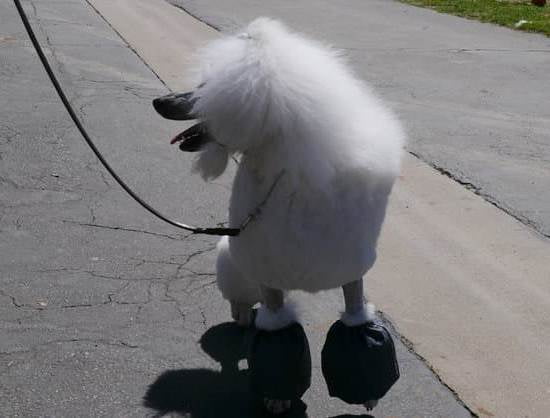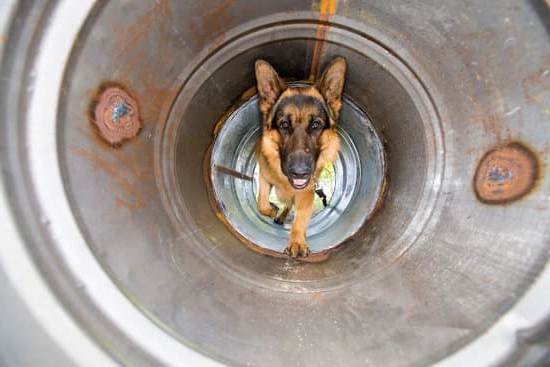Dog Crying When Crate Training
There is a lot of confusion about why dogs cry in their crates, and whether or not it is a bad sign. The answer is that it can be a bad sign, but it doesn’t have to be. The vast majority of the time, dogs cry in their crates because they are uncomfortable or anxious. This can be caused by a number of things, including:
-Having to eliminate and not being able to
-Being cold or uncomfortable
-Being in an unfamiliar environment
-Being in close proximity to other animals or people
-Being in pain
-Being scared
If your dog is crying in their crate, the first thing you need to do is figure out why. Once you know the cause, you can work on fixing the problem. If your dog is uncomfortable or anxious, you can try to make them more comfortable by adding a soft blanket or toy, putting a warm pad in the crate, or by giving them some time to adjust to the crate. If your dog is in pain, you should take them to the vet. If your dog is scared, you can try to desensitize them to the crate by gradually introducing them to it, starting with short periods of time and gradually working up to longer periods.
How To Train Your Dog To Stay In A Crate
Many people view crates as cruel and inhumane, but in reality, they can be a very effective training tool. If used correctly, crates can help dogs learn to stay calm and can even help prevent them from developing bad habits.
The key to crate training is to make sure that your dog sees the crate as a place of comfort and security. Start by feeding your dog in the crate and then gradually begin to introduce him to the crate for short periods of time. Once your dog is comfortable in the crate, you can start using it for training purposes.
If your dog starts to whine or bark in the crate, don’t release him immediately. Wait until he is quiet before letting him out. This will help him learn that whining and barking will not get him out of the crate.
If you are using the crate for housebreaking purposes, make sure to take your dog outside frequently, and reward him with treats and praise when he eliminates in the appropriate spot.
Crate training can be a difficult process, but with patience and perseverance, it can be a very effective tool in training your dog.
Crate Training A Dog Whining
There are a few possible reasons your dog may be whining in their crate and trying to get out. The most common reason is that they are uncomfortable and want to be released. Dogs may whine if they are too hot or too cold, if they are in pain, or if they are feeling anxious or scared.
If your dog is whining in their crate, the first thing you should do is check to make sure they are not in any pain or distress. If they are, take them to the veterinarian immediately. If they are not in pain, you can try to adjust their environment to make them more comfortable. If it is too hot or cold in their crate, try to adjust the temperature to make them more comfortable. If they are feeling anxious or scared, try to make their crate a more comfortable and relaxing place for them.
If you cannot make your dog more comfortable in their crate, you may need to consider crate training them differently. You may need to start with a larger crate so they have more room to move around, or you may need to start leaving them out of the crate more often so they can get used to being around people and other animals.
Potty Training Dog Crate
If you’re potty training your dog, you may be wondering if you should use a crate. Crates can be a great tool for potty training, but they’re not right for every dog.
The first thing you need to do is decide if your dog is ready for a crate. Dogs should be at least six months old before they start crate training. They should also be able to hold their bladder for at least six hours.
If you decide a crate is right for your dog, you’ll need to choose the right size. The crate should be big enough for your dog to stand up, turn around, and lie down in.
Once you have the crate, you’ll need to start training your dog. The first step is to put your dog in the crate for a few minutes at a time. gradually increase the amount of time your dog spends in the crate.
If your dog has an accident in the crate, don’t get mad. Just clean it up and put your dog back in the crate. Be sure to praise your dog when they go potty outside the crate.
Using a crate can be a great way to potty train your dog, but it’s not right for every dog. If you decide to use a crate, be sure to choose the right size and start training your dog gradually. If your dog has an accident in the crate, don’t get mad. Just clean it up and put your dog back in the crate. Be sure to praise your dog when they go potty outside the crate.
Dog Training Crate Petsmart
Dogs are innately den animals, and as such, they feel secure in a small, enclosed space. A crate can provide this sense of security, and when used properly, can be an effective tool in dog training.
The crate should be large enough for the dog to stand up, turn around, and lie down in comfortably. It should never be so large that the dog can eliminate in one corner and sleep in another.
When crate training a dog, the crate should be placed in an area of the house where the dog spends a lot of time, such as the family room. The dog should be allowed to investigate the crate and enter it voluntarily. Once the dog is comfortable going in and out of the crate, the door can be closed for short periods of time.
The crate can be used as a place of confinement when the dog is not being supervised. For example, if the dog is not allowed to eat table scraps, he can be crated when the family is eating dinner. This will help prevent the dog from learning to beg at the table.
The crate can also be used as a place to put the dog when he is being punished. For example, if the dog jumps on the couch, he can be placed in the crate for a few minutes.
The crate should never be used as a punishment in and of itself. The dog should be given plenty of positive reinforcement for entering the crate and for behaving appropriately while in the crate.

Welcome to the blog! I am a professional dog trainer and have been working with dogs for many years. In this blog, I will be discussing various topics related to dog training, including tips, tricks, and advice. I hope you find this information helpful and informative. Thanks for reading!





